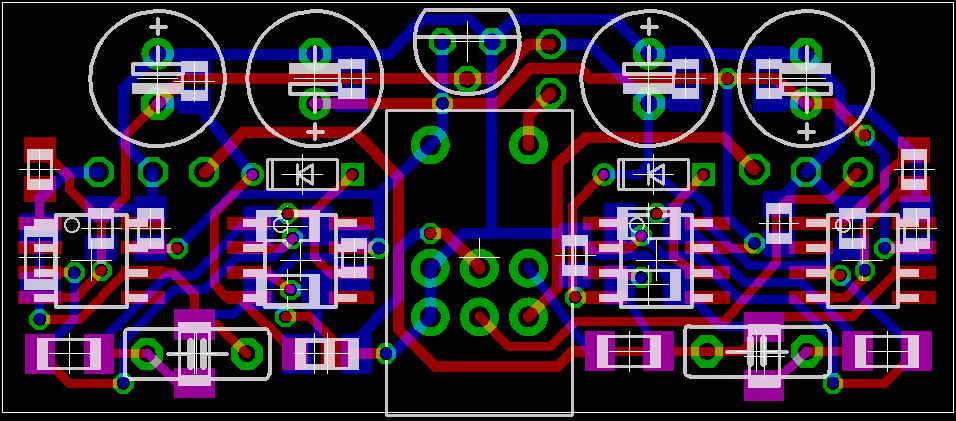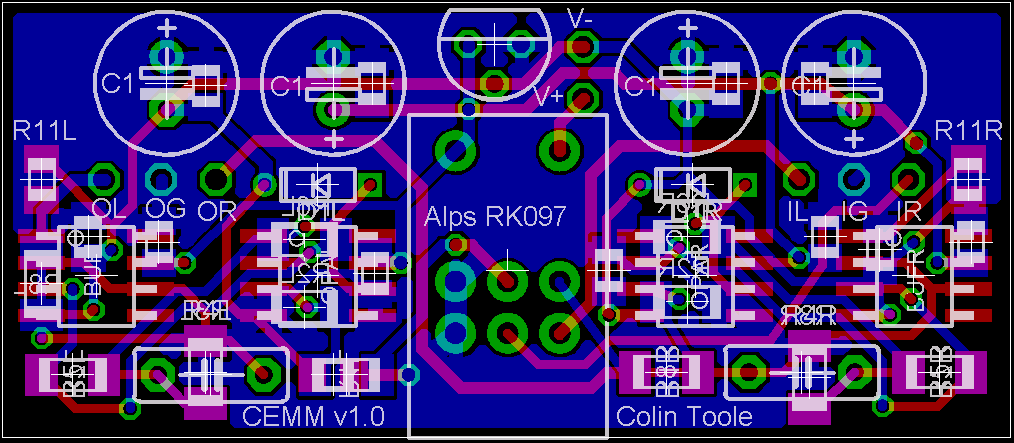Francis_Vaughan
100+ Head-Fier
- Joined
- Jan 30, 2005
- Posts
- 268
- Likes
- 10
I'm going to dive in from left field.
Looking at the layout I think I perceive a bit of the tail wagging the dog going on. Your layout seems to be overly worried about the physical beauty of the positioning of the devices, to the detriment of the routing. First up the symmetric layout of the two channels - you are making a rod for your own back. Also the precise grid lined layout - similar. In crafting a layout that is so space constrained these are luxuries you can't afford.
I would suggest that now you have an existence proof - i.e. you know it is feasible you tear it up and start out like this:
Take a single channel - and lay it out. Don't put borders around the layout yet, just try to lay out one channel in as neat a manner as you can. Don't glue the ICs down as your first pass, sit back and think about the interconnections around them. Attach the local components first, than look to the relative position of the ICs. You might find rotating one 180 degrees helps, or 90 degrees. Currently it looks as if holding them in place has forced all sorts of sub-optimal layout.
Once you have a complete channel, see how you can use it as a building block. You can flow other parts about them. The PS does not need to be a symmetric thing at the top of the board. Nothing says the rail splitter has to sit in pride of place in the middle. I will bet that a ground channel will fit easily, and with much neater layout.
Looking at the layout I think I perceive a bit of the tail wagging the dog going on. Your layout seems to be overly worried about the physical beauty of the positioning of the devices, to the detriment of the routing. First up the symmetric layout of the two channels - you are making a rod for your own back. Also the precise grid lined layout - similar. In crafting a layout that is so space constrained these are luxuries you can't afford.
I would suggest that now you have an existence proof - i.e. you know it is feasible you tear it up and start out like this:
Take a single channel - and lay it out. Don't put borders around the layout yet, just try to lay out one channel in as neat a manner as you can. Don't glue the ICs down as your first pass, sit back and think about the interconnections around them. Attach the local components first, than look to the relative position of the ICs. You might find rotating one 180 degrees helps, or 90 degrees. Currently it looks as if holding them in place has forced all sorts of sub-optimal layout.
Once you have a complete channel, see how you can use it as a building block. You can flow other parts about them. The PS does not need to be a symmetric thing at the top of the board. Nothing says the rail splitter has to sit in pride of place in the middle. I will bet that a ground channel will fit easily, and with much neater layout.







